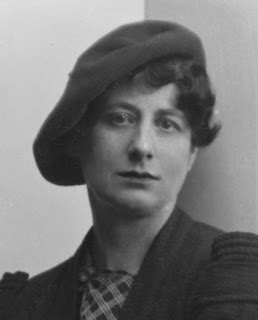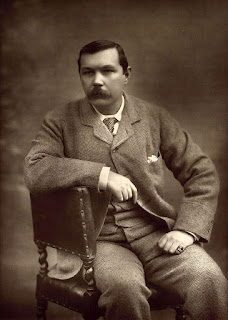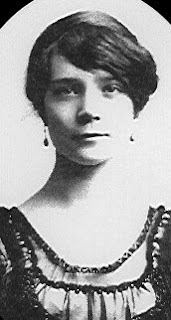How Ngaio Marsh first started writing crime stories
Dame Edith Ngaio Marsh, a New Zealand
writer and theatre director, wrote 32 detective novels featuring Inspector
Roderick Alleyn, a gentleman detective working for the Metropolitan Police in
London.
Ngaio Marsh in a picture thought to
have been taken in around 1935
She became known as one of the Queens
of Crime, sharing the distinction with the English writers Agatha Christie,
Dorothy L Sayers and Margery Allingham.
Agatha Christie led the way with The
Mysterious Affair at Styles, published in 1920. Then came Dorothy L Sayers with
Whose Body? published in 1923, followed by Margery Allingham with The Crime at
Black Dudley, published in 1929.
Ngaio Marsh was born and educated in
Christchurch New Zealand and studied painting before joining a touring theatre
company as an actress. She divided her time between New Zealand and the UK from
1928 onwards, when she started up an interior decorating business in
Knightsbridge, London.
The idea for her first crime novel, A
Man Lay Dead, came to her in 1931 when she was living in a basement flat off
Sloane Square.
In the preface to my copy of an
omnibus edition of her first three novels - A Man Lay Dead, Enter a Murderer
and The Nursing Home Murder - Ngaio Marsh writes about how she came up with the
character of Detective Inspector Roderick Alleyn.
It was a wet Saturday afternoon in 1931 and she had been reading a detective story borrowed from a library, although she couldn’t remember whether it was a Christie or a Sayers. By four o’clock, as the afternoon became darker and the rain was still coming down relentlessly, she had finished it. She wondered idly whether she had it in her to write something similar.
Then she braved going out in the rain to a stationer’s shop
across the street where she bought six exercise books, a pencil and a pencil
sharpener. And that is how the writing career of the fourth Queen of Crime from
New Zealand began.
The Ngaio Marsh Collection,
Book 1, published by Harper
With many eccentric detectives
already operating at the time, such as Sherlock Holmes, Hercule Poirot and Lord
Peter Wimsey, Ngaio decided to opt for a professional policeman, with a
background resembling that of some of the friends she had made in England.
Revealing her interest in the
theatre, she chose the surname of an Elizabethan actor called Edward Alleyn,
gave him the Christian name Roderick, inspired by a recent visit to Scotland,
opened an exercise book, sharpened her pencil and began to write.
In A Man Lay Dead, Inspector Alleyn
is asked to investigate the murder of a guest during a country house party. The
host had suggested they play the Murder Game, which at the time was very
popular with guests at weekend parties, but when the lights go up it is
discovered that the victim is dead for real.
Alleyn arrives at Frantock ‘a
delightful old brick house’, views the corpse, interviews the guests and
gathers evidence with his team of police officers,
He enlists the help of one of the
guests, a young journalist called Nigel Bathgate, as his ‘Watson’.
Bathgate later becomes a friend of
the detective and appears in several of Ngaio’s 32 Inspector Alleyn novels.
The mystery centres round a valuable
Russian dagger, which ends up in the back of the corpse, a disappearing Russian
butler, a criminal gang of Russians in London and the victim’s unfortunate
habit of philandering.
Alleyn picks up on the smallest of
clues, such as a button from a glove and a trace of face powder on a man’s
suit. He eventually tricks the murderer into giving himself away.
A Man Lay Dead was first published in 1934. It is now available in a variety of formats.












